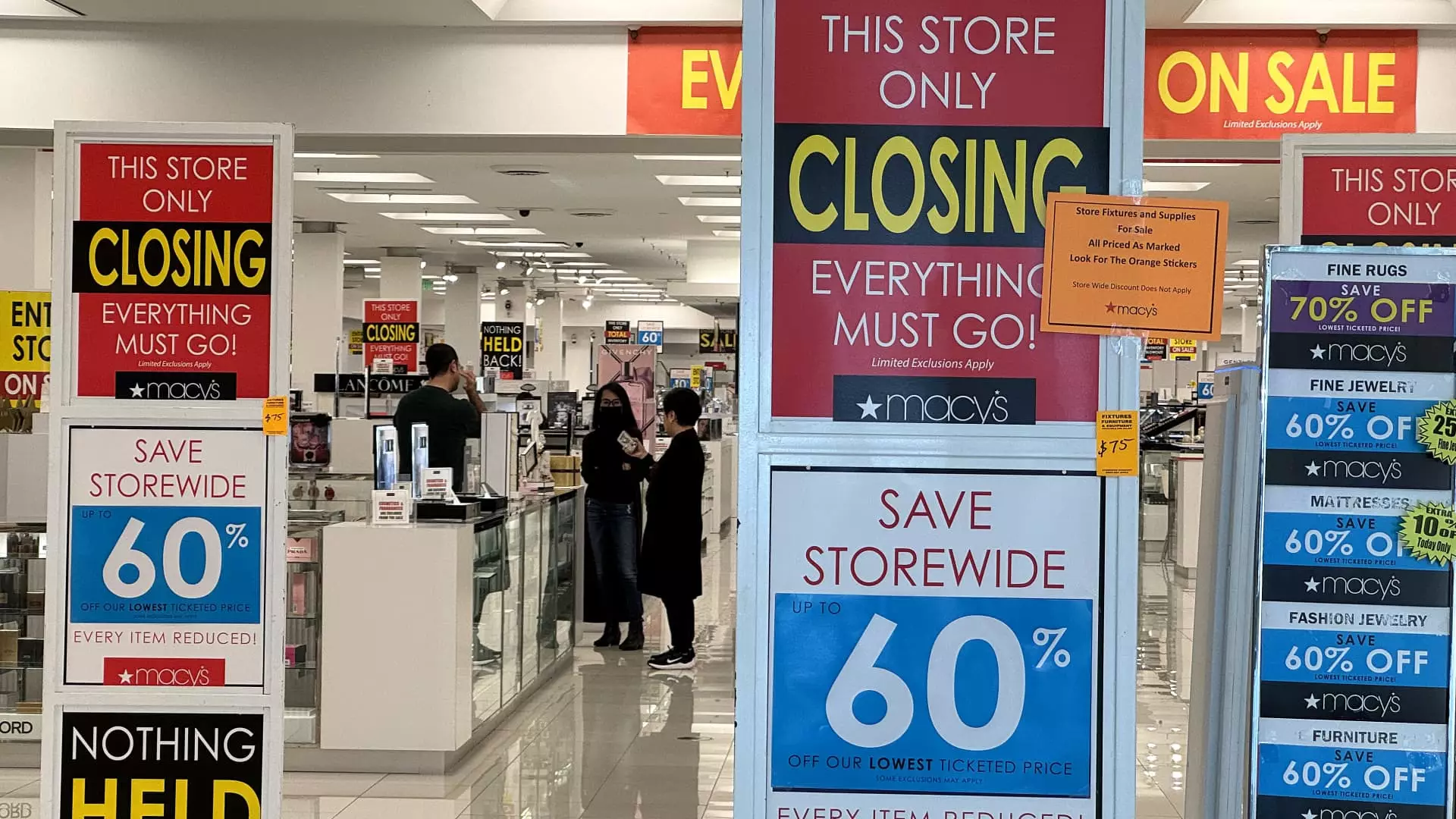Macy’s announced plans to close approximately 150 stores, which has opened up an opportunity for its retail competitors. Target CEO Brian Cornell and Kohl’s CEO Tom Kingsbury have both expressed that they see a chance to increase their own sales with the downsizing of Macy’s. Off-price chain T.J. Maxx is also poised to benefit from the closures, as they carry similar merchandise and have stores near Macy’s locations that may be shutting down. Other retail names like Ross and Nordstrom could also see an uptick in business as they share many customers with Macy’s, according to Earnest Analytics credit card data analysis.
With Macy’s closures potentially putting up to $2 billion of market share up for grabs, the retail landscape is set to change. The company plans to close less than 10% of its sales with the 150 stores shutting down. Macy’s strategy is to focus on driving higher sales at other locations, such as its higher-end department store Bloomingdale’s and beauty chain Bluemercury, which have outperformed the company’s namesake stores. This move will free up capital to invest in its better-performing locations.
The closure of Macy’s giant stores, which serve as anchors in shopping malls, will have implications for these retail locations. Department stores have been losing market share over the years due to changing shopping habits and increased online shopping. Retailers like Target and Abercrombie & Fitch have benefitted from the declining market share of department stores. Target CEO Cornell mentioned how the retailer has leveraged opportunities from other store closures in the past, positioning them strategically in former locations of stores like Toys R Us.
Off-price retailers are emerging as major competitors to traditional department stores like Macy’s. Stores like T.J. Maxx, Marshalls, and Home Goods are well-positioned to benefit from Macy’s closures, as they offer similar products at a better price point. Off-price stores serve a similar customer base to Macy’s, with a more affluent demographic gravitating towards their offerings. TJX stores have a larger footprint than Macy’s and are more conveniently located for shoppers.
Rival retailers like Kohl’s are also eyeing the opportunity presented by Macy’s closures. Kohl’s CEO Kingsbury sees it as a chance for the company to grow and capitalize on quality locations in strip centers. Both Kohl’s and Macy’s face challenges with attracting younger customers and softer discretionary spending. Macy’s has been opening smaller stores in strip centers and adding off-price shops like Backstage to its larger department store locations to adapt to changing consumer preferences.
Future Retail Landscape
The retail landscape is evolving rapidly, with major shifts in market share and consumer behavior. While Macy’s downsizing opens up opportunities for its competitors, it also presents challenges for the department store chain. Macy’s CEO Tony Spring emphasized the importance of focusing on higher sales at remaining locations while leveraging the success of its other brands like Bloomingdale’s and Bluemercury. The rise of off-price retailers and changing shopping habits are reshaping the retail industry, with a focus on convenience, price, and product offerings. As traditional department stores adapt to these changes, the retail landscape is set for further disruption in the years to come.

